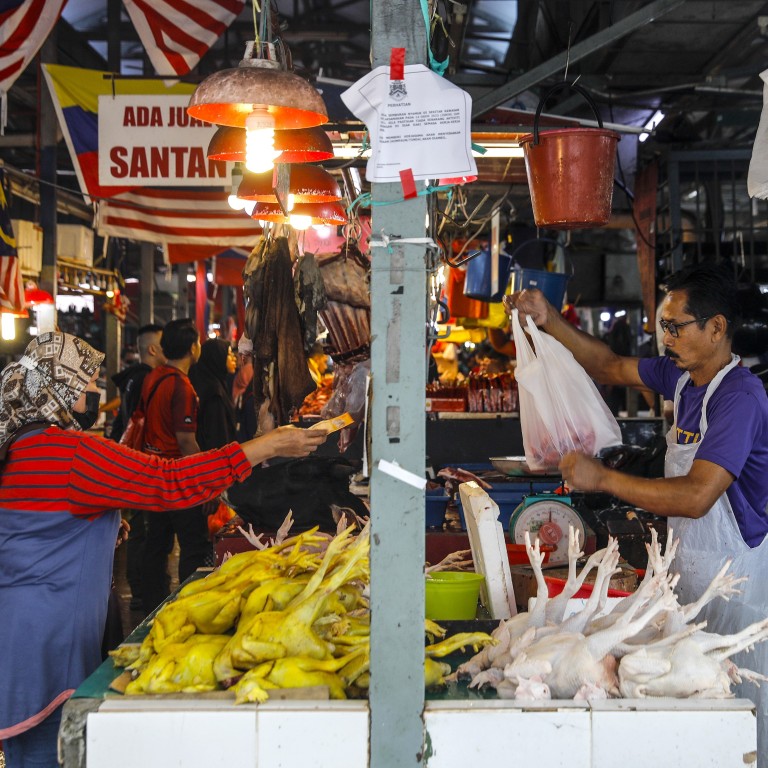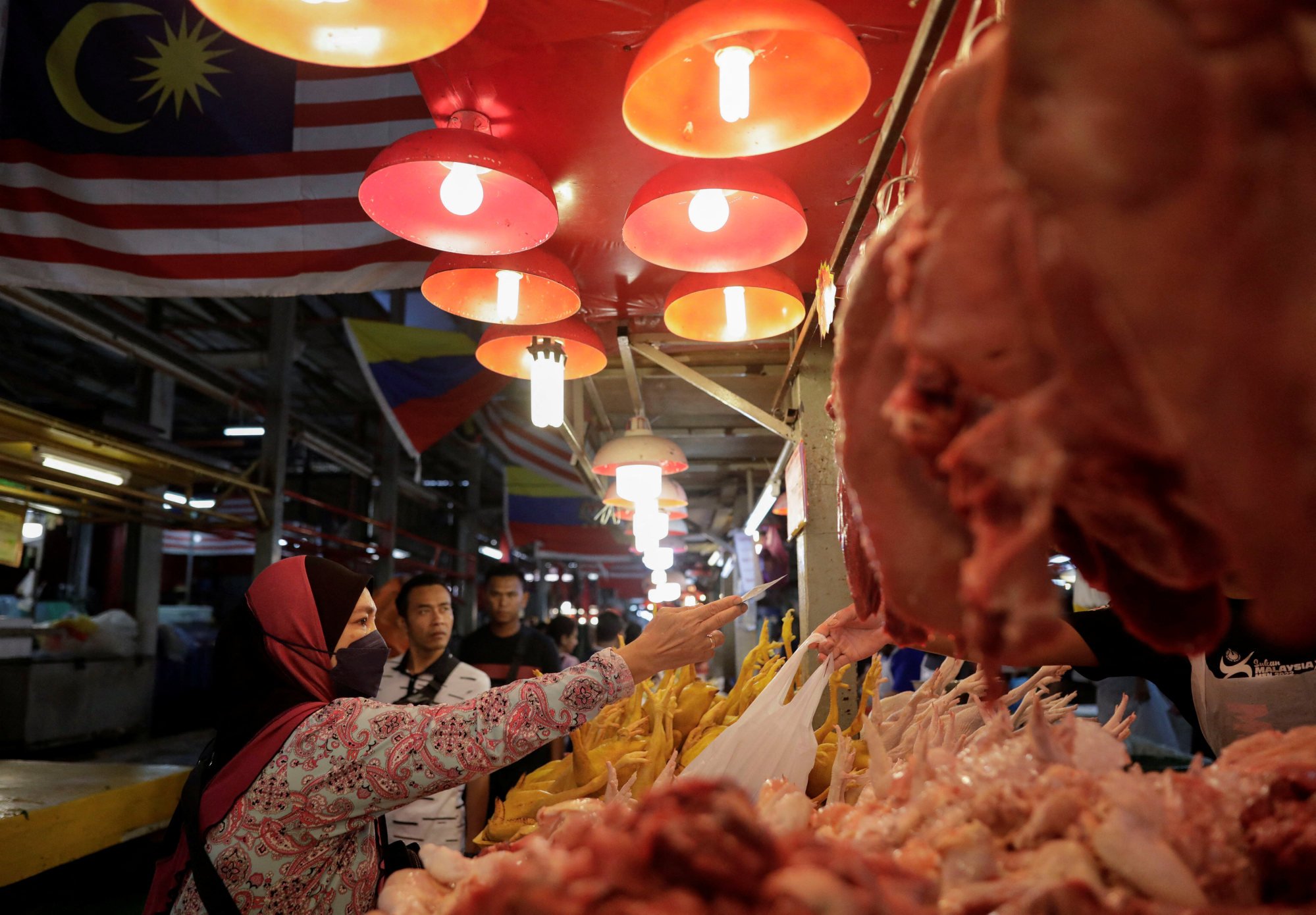
Malaysia to implement price curbs to guarantee affordable chickens for Lunar New Year: ‘more than enough to go around’
- Malaysia’s food ministry said it will implement a price control scheme during the holiday period
- Subsidies for poultry farmers were discontinued on November 1 last year, and since then, the price of chicken has been capped
He said government intervention would ensure prices do not fluctuate too much.
He added that chicken parts and frozen chicken were also sold below the retail ceiling price at all outlets.
“For Lunar New Year, a festive season price control scheme will be implemented through the Domestic Trade and Cost of Living Ministry,” he said.
Lokman said the relevant ministries would continue to collaborate to maintain a stable chicken supply and would also monitor reported price manipulation activities.
Subsidies for poultry farmers were discontinued on November 1 last year, and since then, the price of chicken has been capped at RM9.40 per kg.

Domestic Trade and Cost of Living Minister Armizan Mohd Ali said his ministry would continue to carry out checks at all retail premises.
He said since chicken prices were floated, the ministry had conducted checks at 1,197 premises.
Overall, he said compliance by retailers had been good, and the ministry had issued notices to only six sellers.
“We will continue to ensure that there is no profiteering or cartel activities such as pacts on prices, production or marketing,” added Armizan.
The ministry’s Enforcement Division director general Azman Adam said, although there had been no implementation of a maximum price for festive seasons since the price was floated, inspections on chicken prices continued.
Poultry farmers are well-prepared for this festive period as we have sufficient supply. Prices will be dictated by demand and supply
“This was to ensure prices did not increase and sellers did not profit. We monitored daily; there was no pause. The public can report to us if chicken prices exceed the ceiling price of RM9.40,” said Azman.
Federation of Livestock Farmers’ Associations of Malaysia president Tan Chee Hee said about two million chickens were consumed daily.
“For Lunar New Year, this will increase by only 1.5 to two times of that – it’s not much.
“Poultry farmers are well-prepared for this festive period as we have sufficient supply. Prices will be dictated by demand and supply,” he said when contacted.
Malaysians eat about 70.43 million chickens per month, or 845.16 million birds annually.

